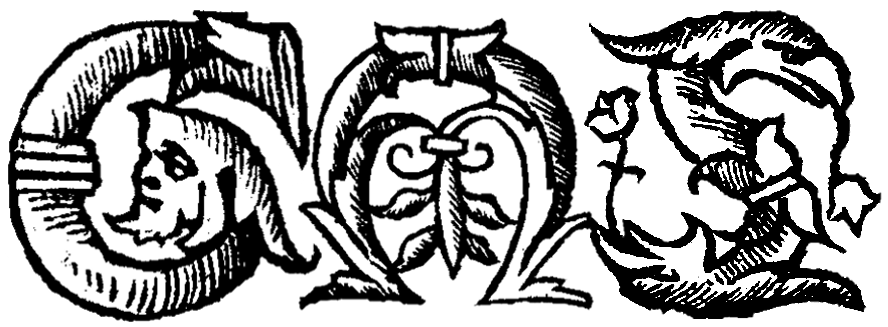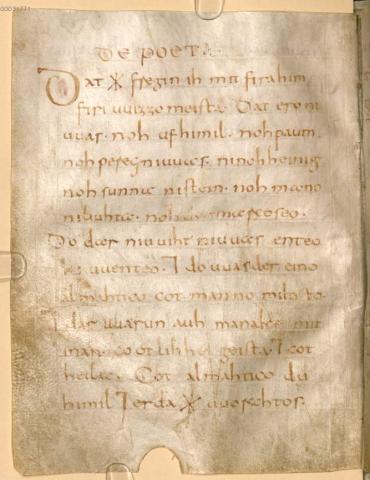The Wessobrunn Prayer | Das Wessobrunner Gebet
Introduction to the Text
The Wessobrunn Prayer is one of the only extant examples of Old High German alliterative verse, in which alliteration is the primary poetic feature. Notably it was intentionally preserved in a codex (manuscript book) of collected texts, including several Latin texts and German glosses. This is unusual: most extant Old High German texts were written in the margins and endpapers of manuscripts. Latin was preferred for church writing as the more prestigious and official language. The Wessobrunn Prayer is similar thematically and formally to the Old High German poem “Muspilli.” The codex has been dated to around 810 CE, and the prayer is written in Carolingian Miniscule (the standard script of the time). The prayer was named for the abbey at Wessobrunn in Bavaria where the codex resided for centuries before it was discovered and studied by philologists and eventually moved to the state library in Munich. The location where it was written and the identity of the author are unknown, though it was certainly someone with a knowledge of theology, perhaps a cleric or a monk. The prayer itself speculates about God and the universe before Creation, and emphasizes the power of the Holy Trinity and the nothingness before creation. There is a possible Anglo-Saxon influence: a star shaped rune is used for the common prefix “ga-,” and the format is similar to prayers used by Anglo-Saxon missionaries as they spread Christianity in Germany during the 8th century. Some of the language at the end of the prayer is parallel to the Nicene Creed, a declaration of faith standardized by the church in the 4th century. Scholars are interested in the Wessobrunn Prayer because of its unique poetic form. It is possible that there were many similar texts that did not survive.
Introduction to the Source
The Wessobrunn Prayer is held at the Bayerische Staatsbibliothek in Clm 22053, fol. 65v-66r.
Further Reading
Wells, Christopher. "The Shorter German Verse Texts." German Literature of the Early Middle Ages, edited by Brian Murdoch, Camden House, 2004, pp. 157-199.
- An overview of Old High German verse texts, including a comparison between the Wessobrunn Prayer, Muspilli, and Lay of Ludwig (all published in the Global Medieval Sourcebook).
Edwards, Cyril W. The Beginnings of German Literature: Comparative and Interdisciplinary Approaches to Old High German. Rochester, NY: Camden House, 2002.
- Chapter 1 discusses the Wessobrunn Prayer in the context of other writings of the period, and Chapter 2 discusses what we can learn from the manuscript in which it is transmitted.
Credits
Translation by Hannah FrakesEdited by Björn BuschbeckEncoded in TEI P5 XML by Hannah Frakes and Danny SmithSuggested citation: Anonymous. "The Wessobrunn Prayer." Trans. Hannah Frakes. Global Medieval Sourcebook. http://sourcebook.stanford.edu/text/wessobrunn-prayer. Retrieved on April 23, 2024.

